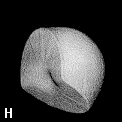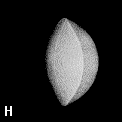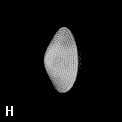I have searched and searched, oh how I have searched.
I am looking for a 3-dimensional visualization of a whole atom, one that that includes all the orbital geometry. A proper "layered" view of the orbitals.
What I am not looking for:
- Individual orbital geometry.
- A "picture" of an atom (i.e. what looks like television static to me).
- Little spherical balls.
- Dot-and-cross diagrams.
I think I understand that this cannot be expressed in just one picture alone, so I look forward to discovering software, or a collection of pictures, that could help express this. Maybe something similar to an exploded view, for atoms?
Please. The universe is weird and I want to see.




















